We tend to remember brilliant stories by their happy endings.
Ollie Watkins, who came on as an 81st-minute substitute in England’s 1-1 European Championship semi-final draw with the Netherlands last night, scored a 90th-minute winner that will live on in the minds of England fans for years to come.
Yet sometimes the build-up to a climactic ending is the cornerstone of a joyful ending; Cinderella’s story is not just about her marriage to the prince.
Watkins’ goal took England to their second final in the last three tournaments under Gareth Southgate, and his introduction of the Aston Villa centre-forward made perfect sense given the way the game played out.
At kick-off, Southgate continued with the same approach England had used with the ball in their quarter-final against Switzerland – although Kyle Walker was further forward on the right of defence.
In the other dugout, Ronald Koeman’s surprising diamond midfield, with Memphis Depay up front and two forwards, Cody Gakpo and Donyell Malen, moving inside, caught England off guard as they initially played in a five-man defence. But Southgate adjusted his team’s structure without the ball to limit their threat.
Outside of possession, the Netherlands continued with their usual 4-2-3-1 formation, but Jerdy Schouten and Tijjani Reijnders marked Jude Bellingham and Phil Foden, while Xavi Simons tried to reduce Declan Rice’s passing angles.
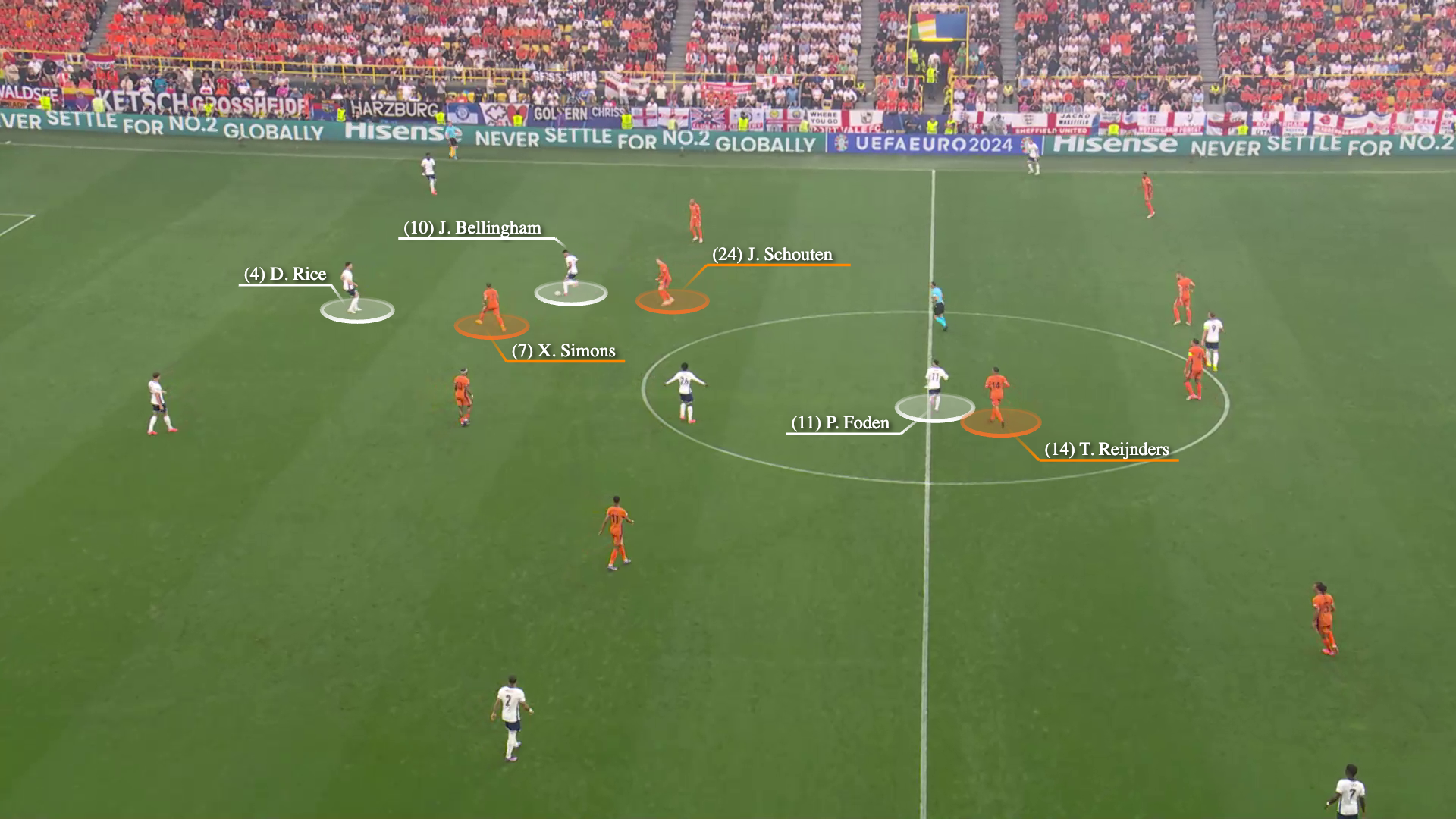
The problem with this approach was that it allowed Kobbie Mainoo to roam freely in midfield. The 19-year-old had space to attack, with Bellingham and Foden dragging Schouten and Reijnders into the centre of the pitch.
Here Gakpo is close to Mainoo, but that was not the case for the rest of the first half.
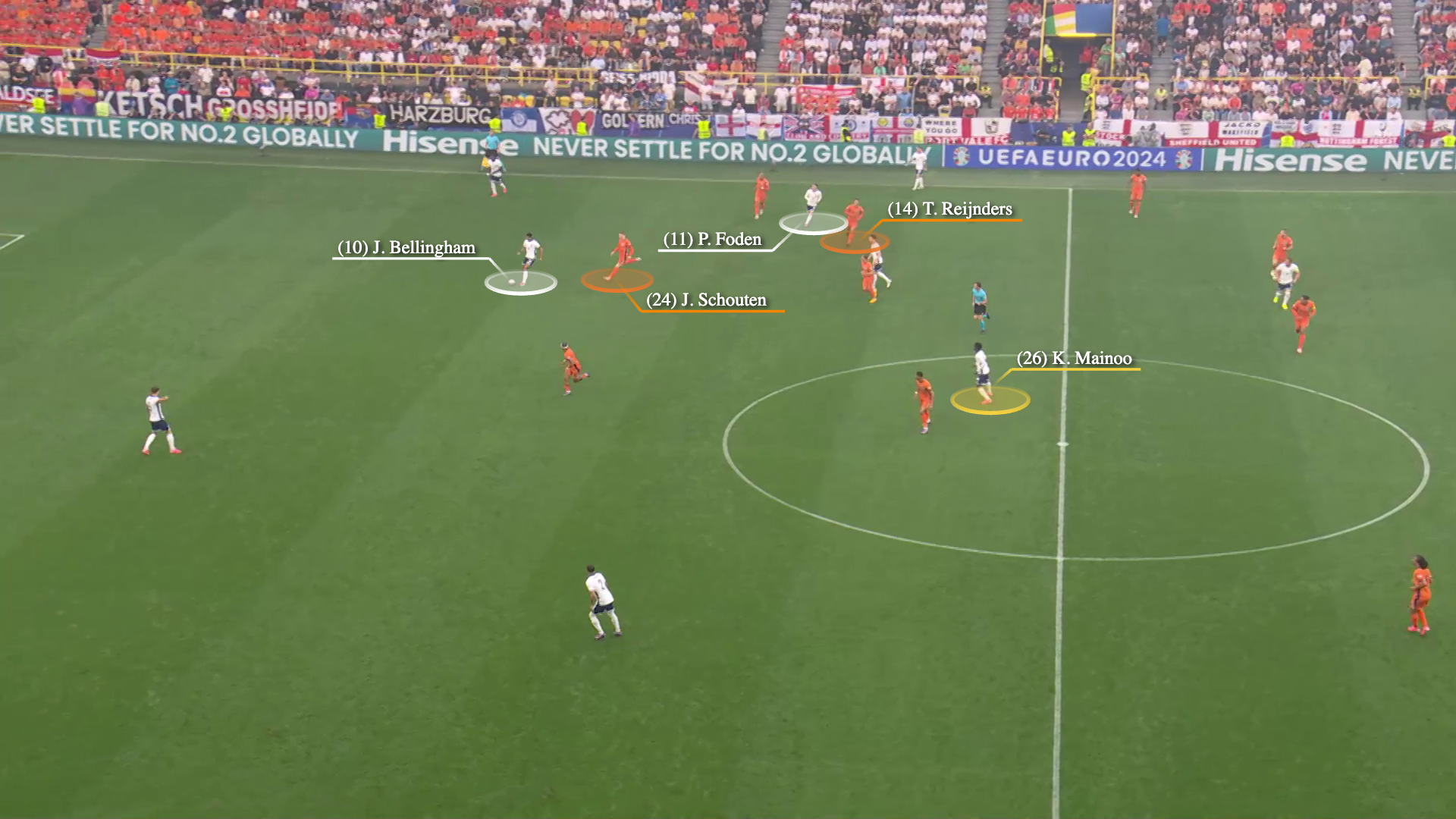
Schouten and Reijnders focused entirely on marking Bellingham and Foden, and with Simons trying to close in on Rice, Mainoo had space and time on the ball when he received it.
In this example, John Stones plays a pass to Rice with Simons near Mainoo.
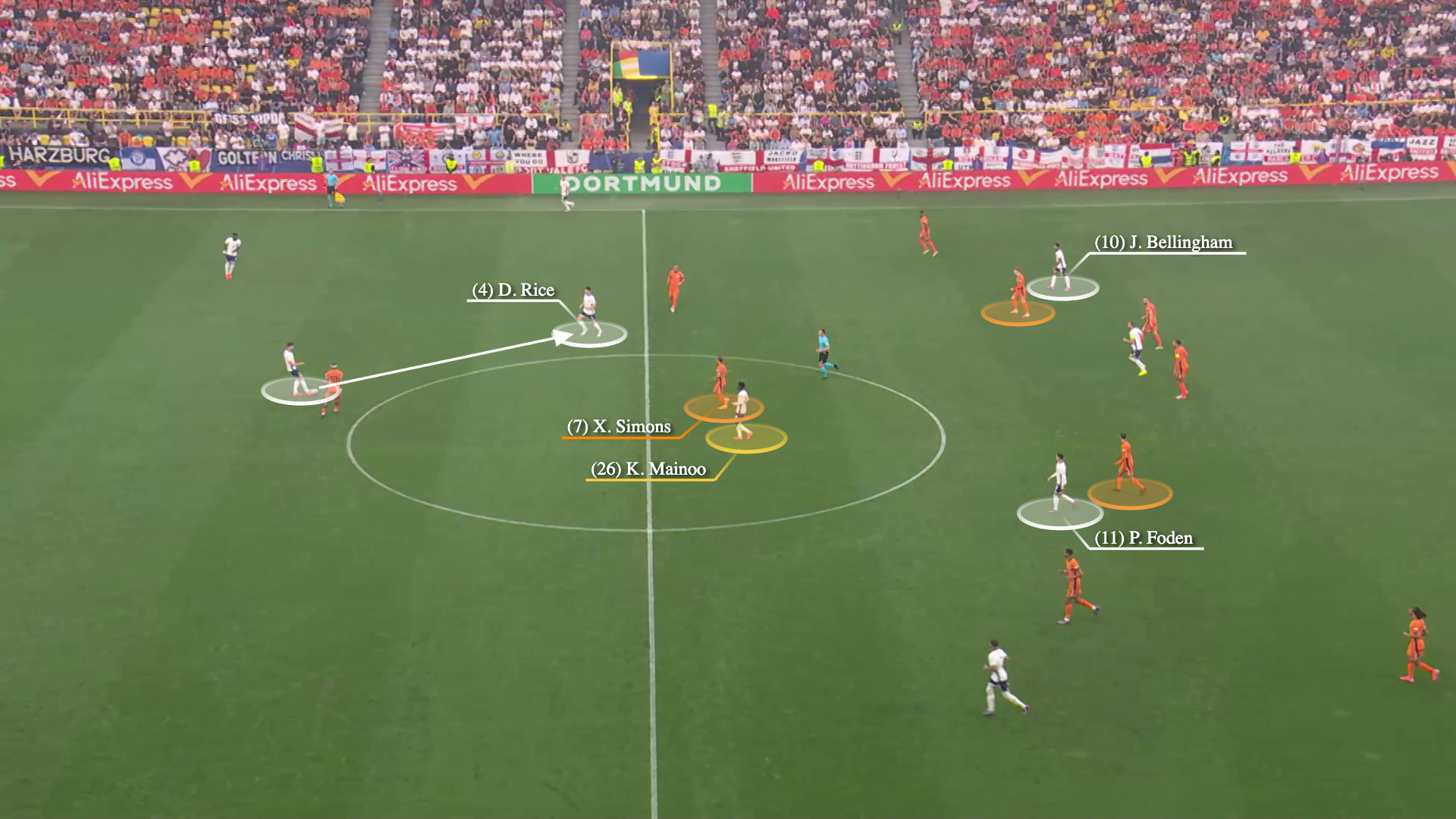
The positioning of Bellingham and Foden empties the Dutch midfield by moving Schouten and Reijnders further forward, allowing Harry Kane to position himself in that area to receive from Rice.
Simons initially blocks the passing lane to Mainoo, but now Kane can find the Manchester United midfielder between the lines.
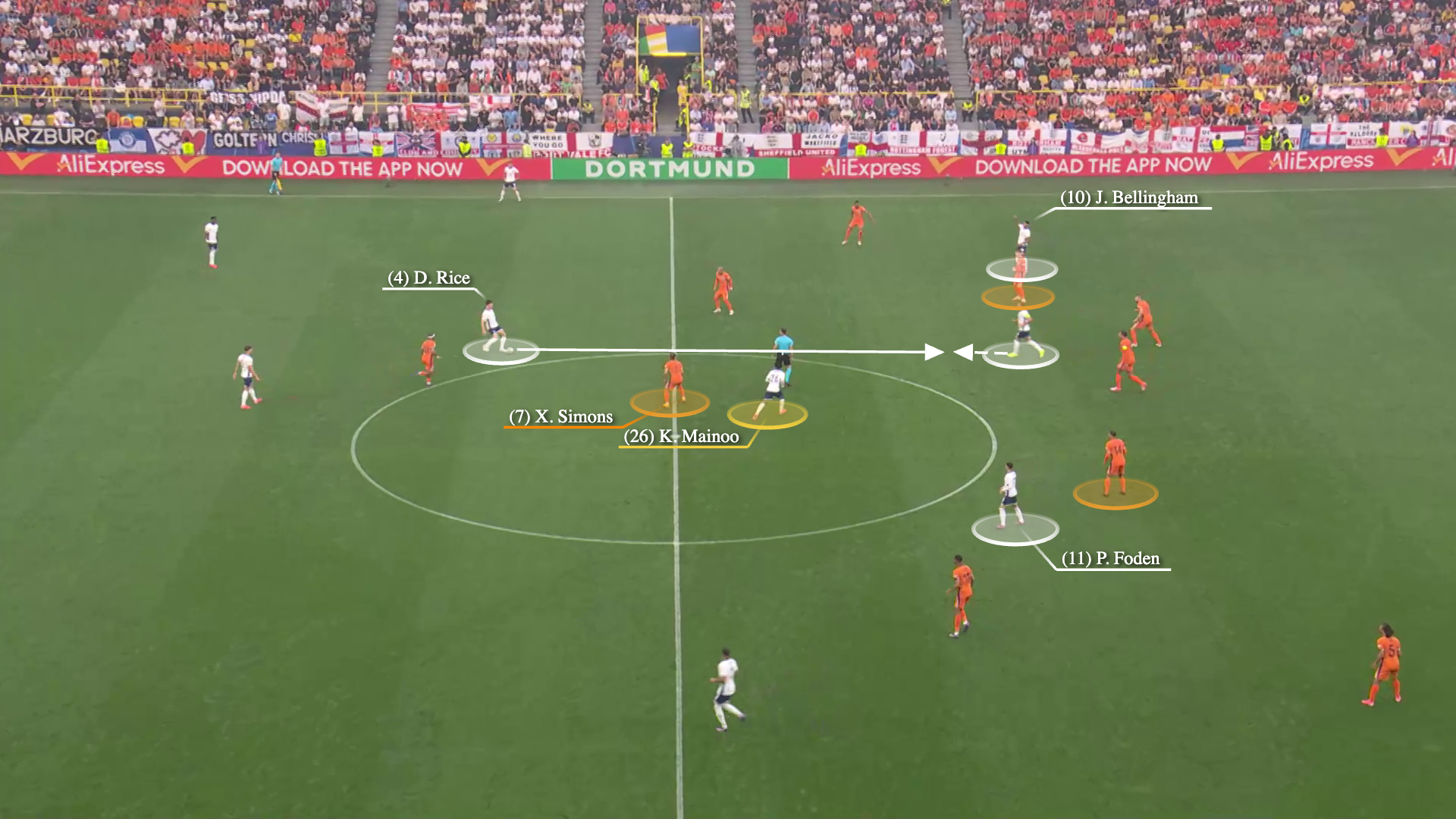
The England centre-forward drops down and plays the pass to Mainoo, but Simons stretches to intercept it.
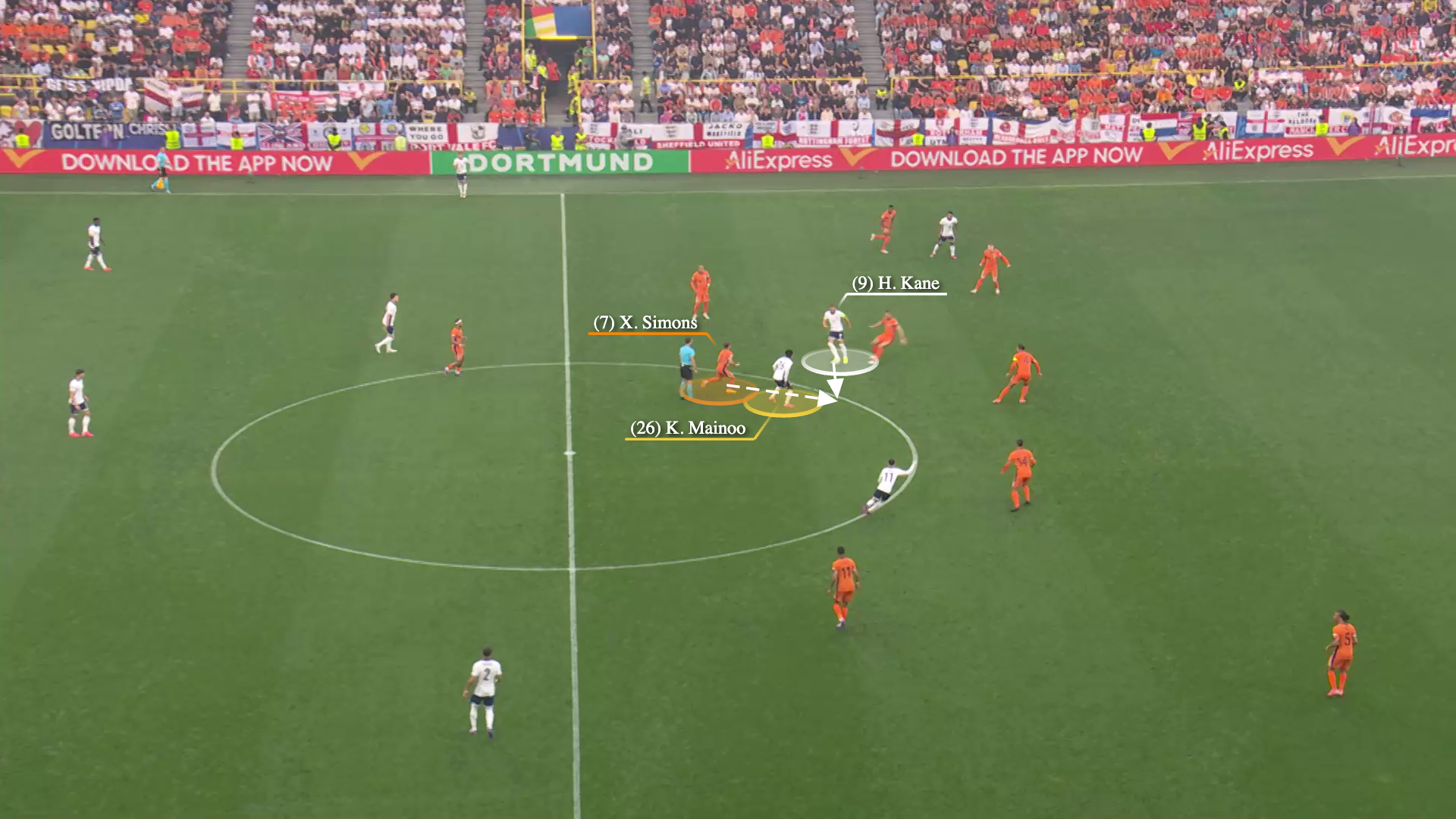
In another example, Schouten and Reijnders are close to Foden and Bellingham, and Simons moves to Rice, leaving Mainoo unmarked.
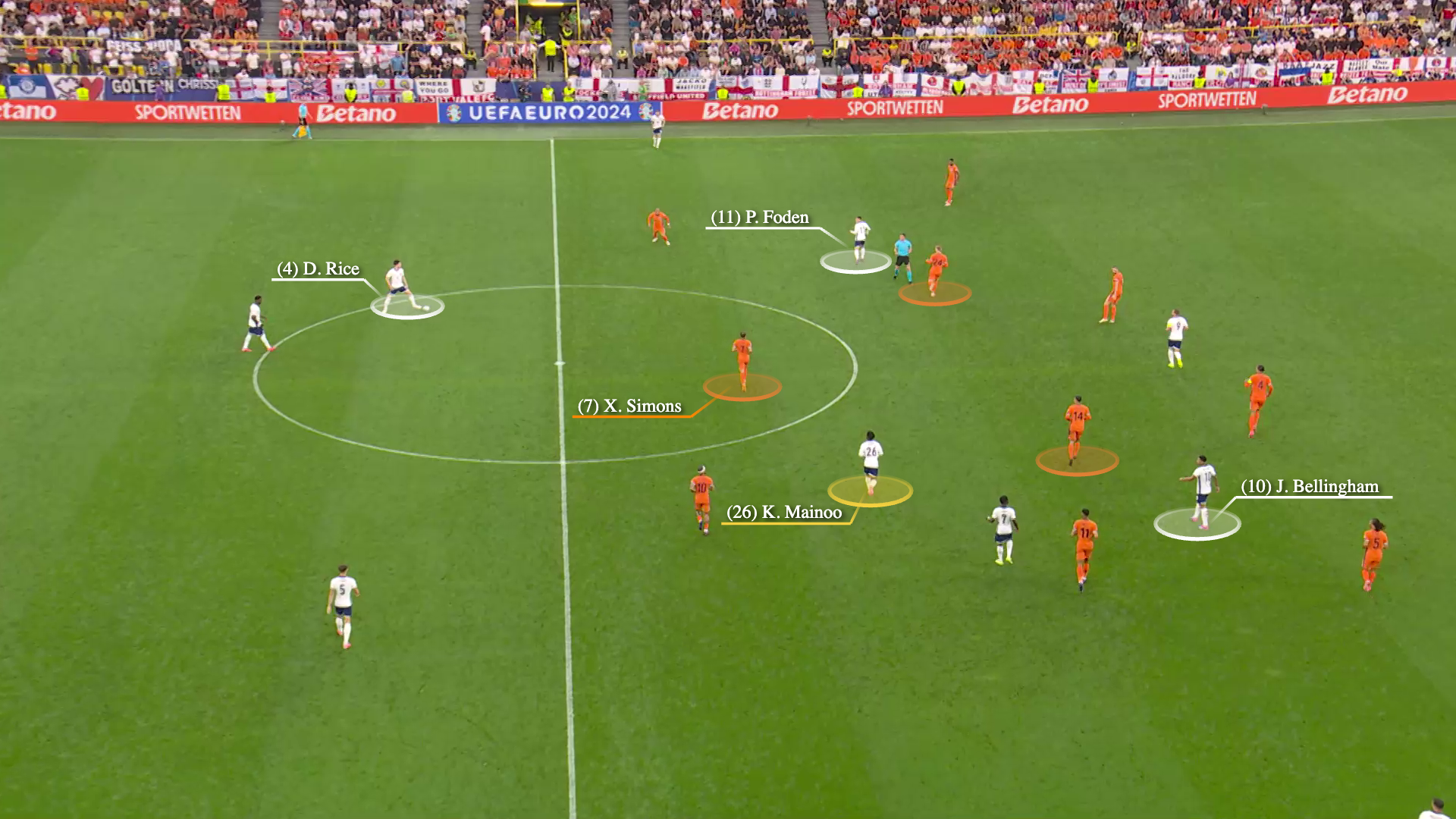
The movement of Foden and Bellingham stretches the Dutch double pivot and creates space in midfield, into which Kane again slides.
Mainoo is relatively free, however, as Reijnders has to position himself closer to Bellingham. Rice finds Kane between the lines…
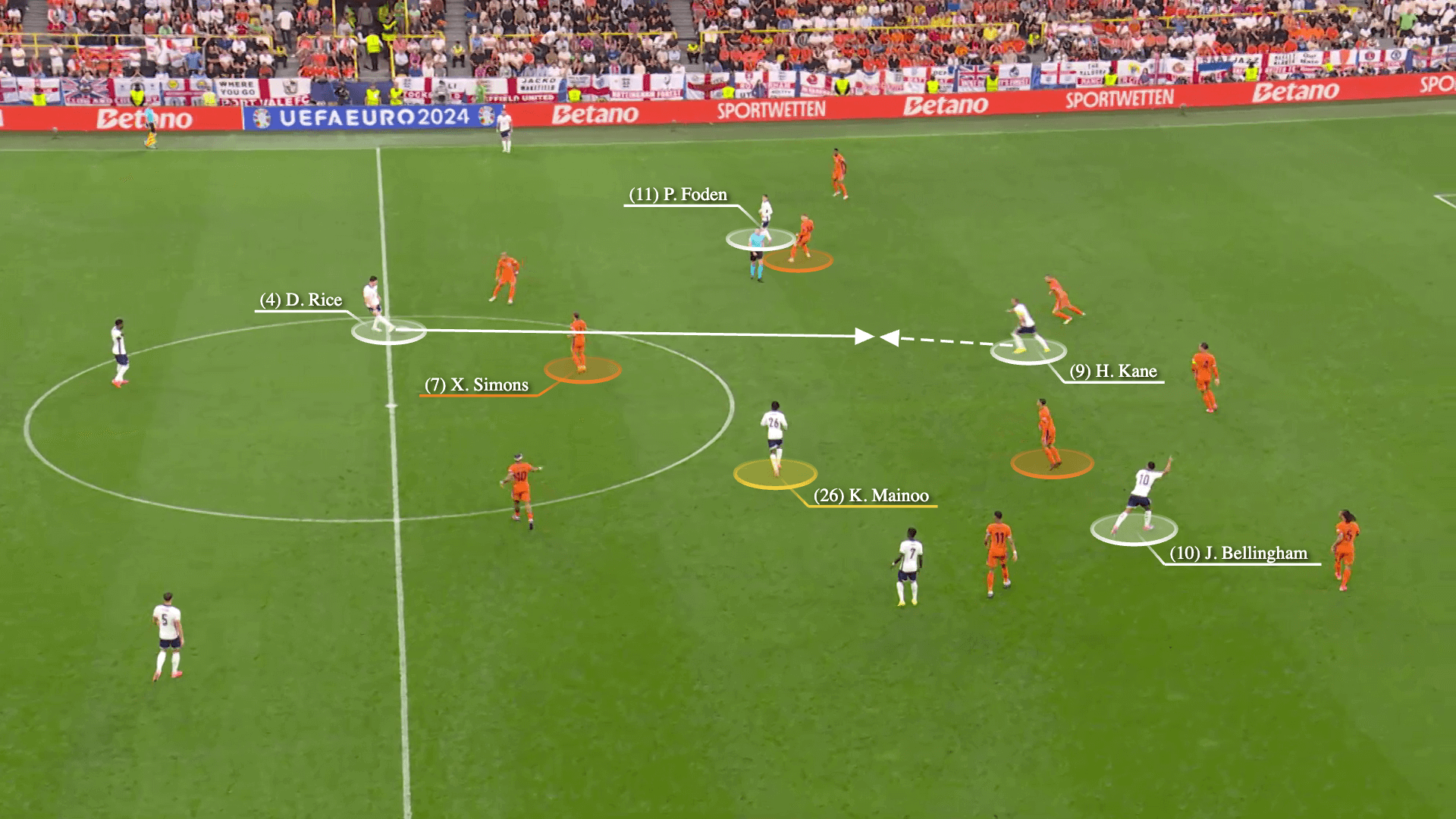
…and the Bayern Munich striker continues his attacks to find Mainoo, who is free again in midfield. Meanwhile, Foden attacks the spaces behind the defence…
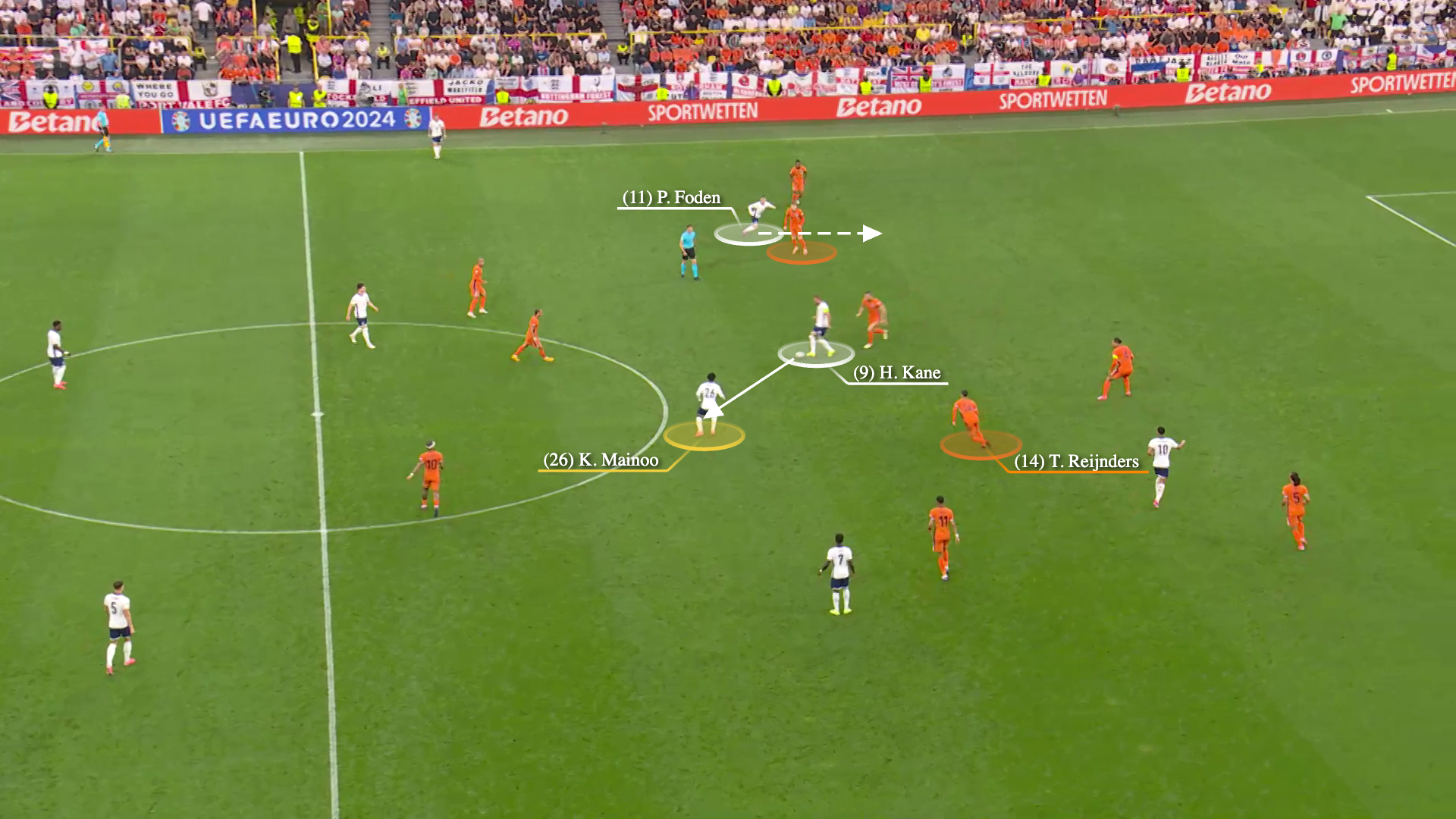
…but Mainoo’s lofted pass to the Manchester City player should have been further behind Koeman’s backline.
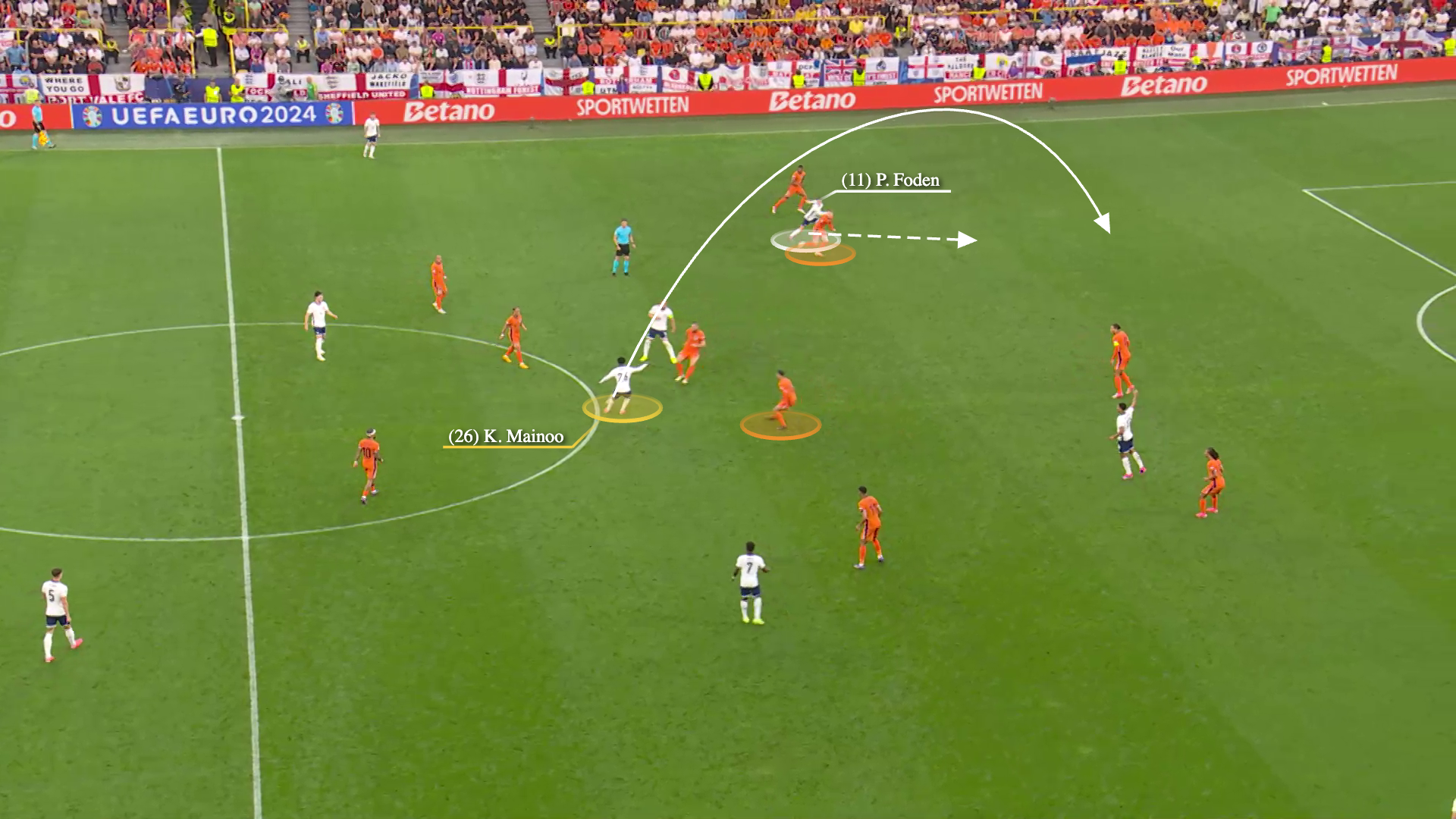
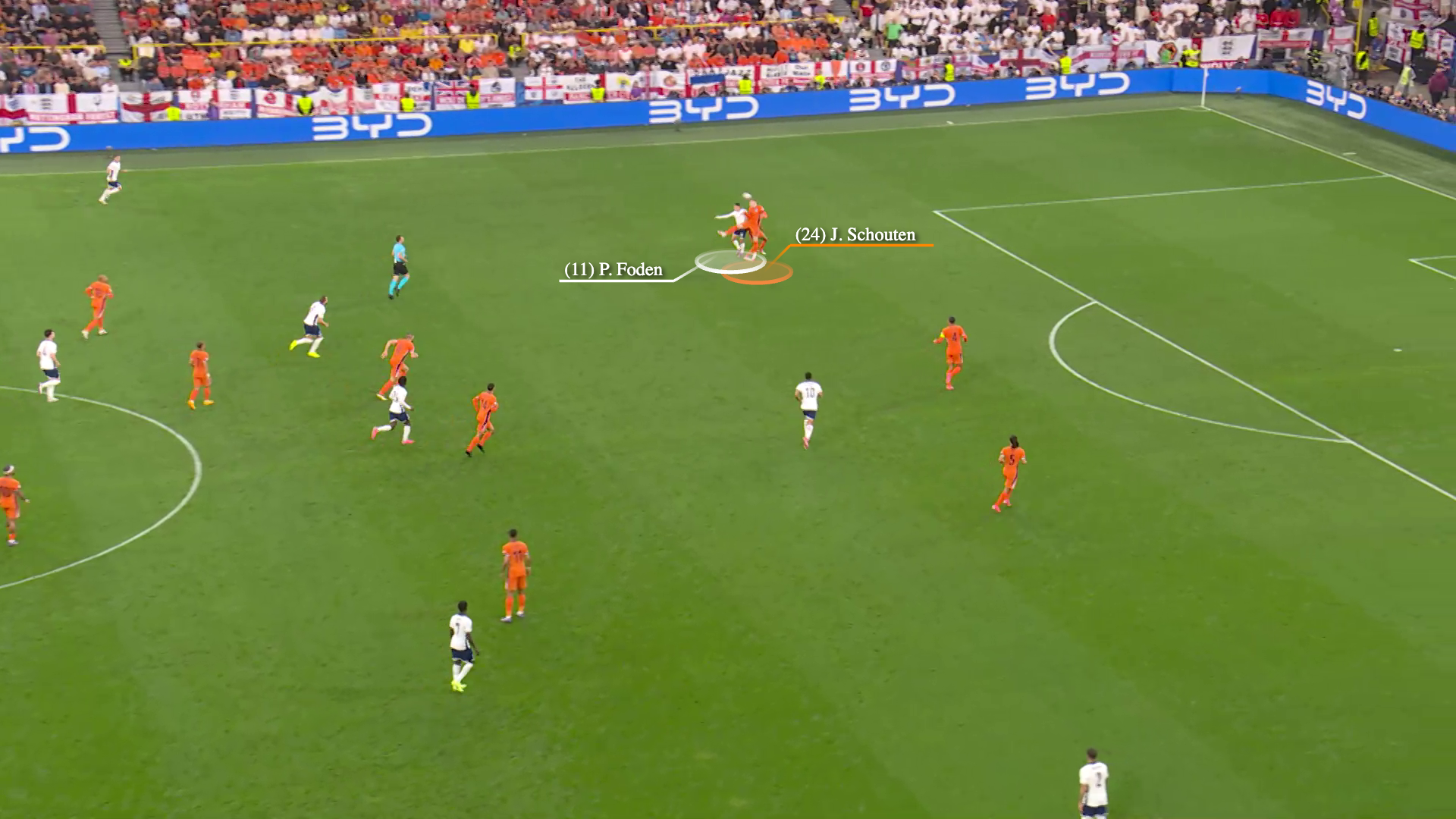
England continued to find Mainoo through this four-on-three scenario in midfield.
Here Simons defends against Rice, while Schouten and Reijnders mark Foden and Bellingham, allowing Southgate’s midfield to combine and reach Mainoo in space.

Reijnders then tries to move up and defend that area, with Schouten dropping low to follow Foden’s movement, but Mainoo’s pass finds Kane.
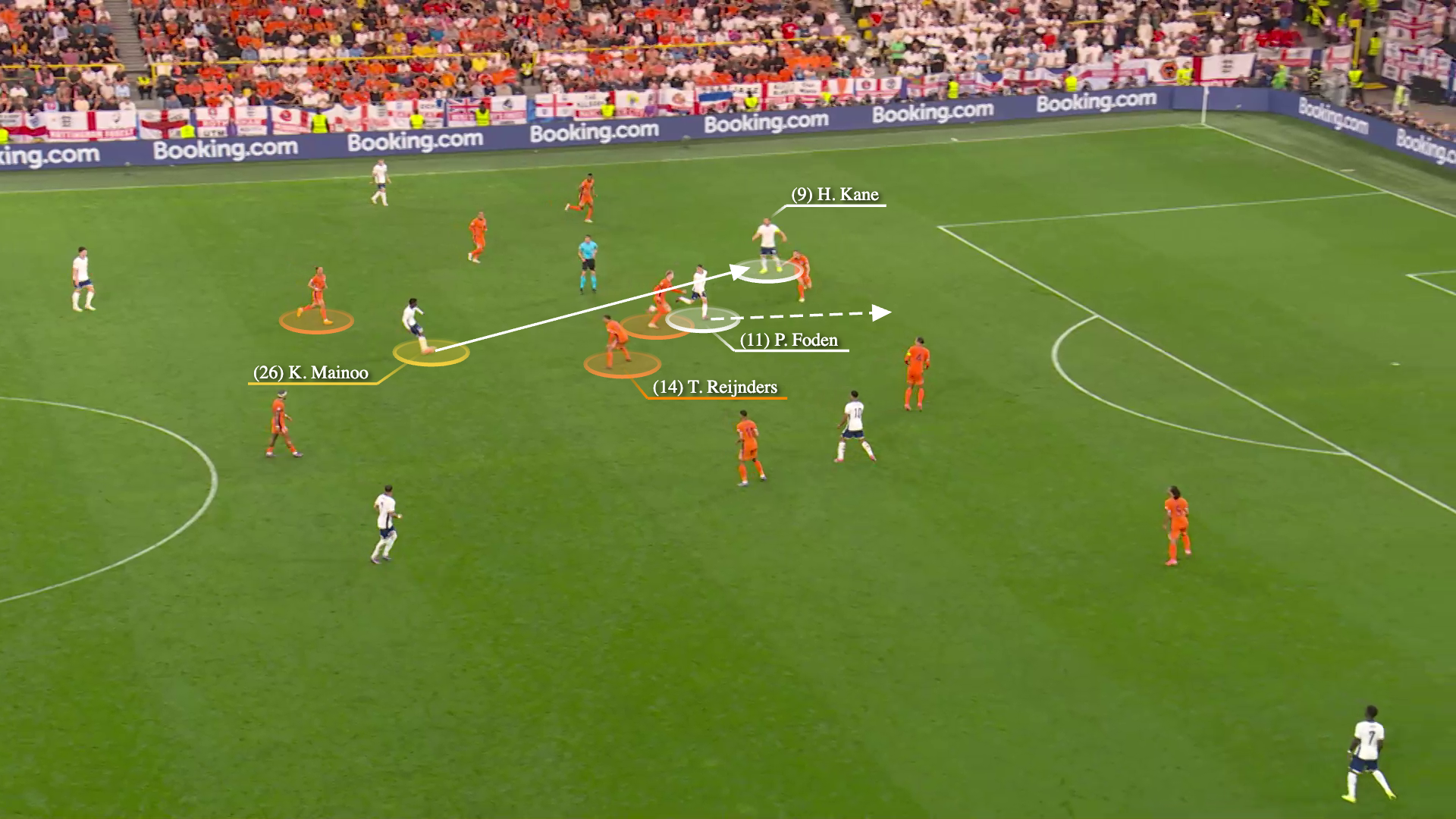
The domino effect of Reijnders’ departure from Bellingham is such that Kane can put the Real Madrid midfielder in an advantageous position against the Dutch centre-backs. However, Kane’s pass to Bellingham is intercepted by Virgil van Dijk.
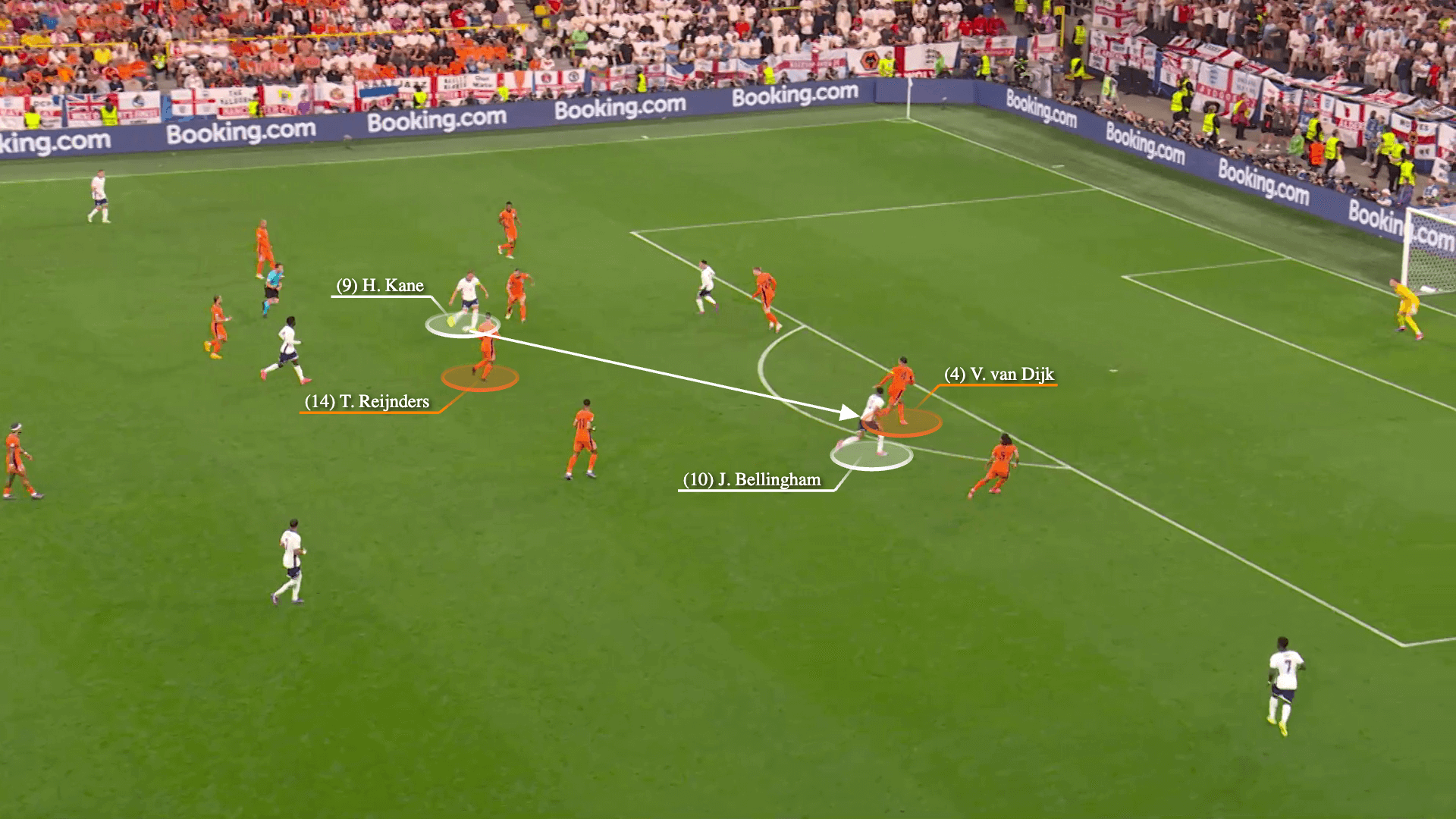
In another example, Foden finds Mainoo between Schouten and Reijnders, with Koeman’s double pivot focusing on the City player and Bellingham.
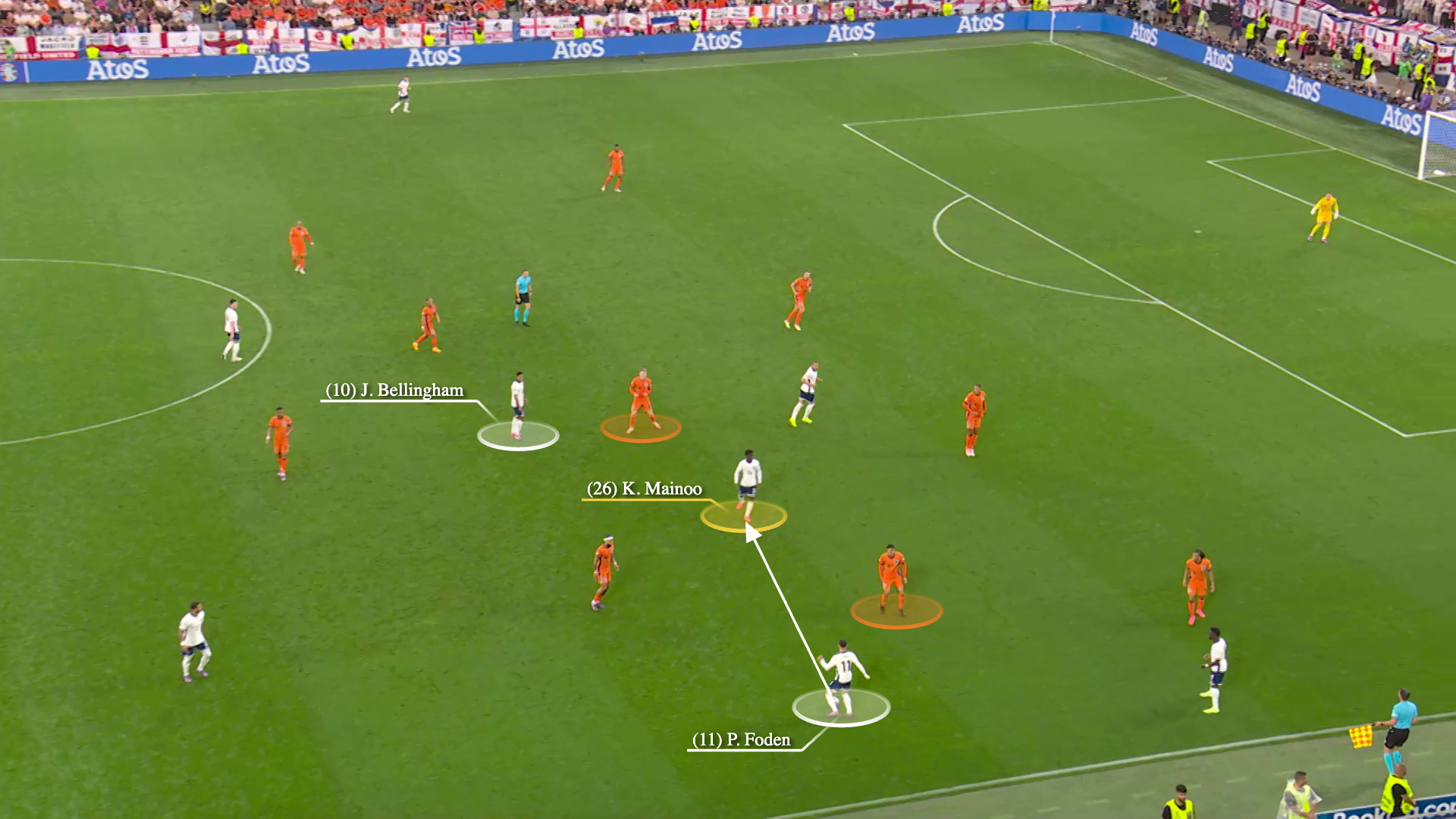
Mainoo then carries the ball forward and finds Foden’s run…
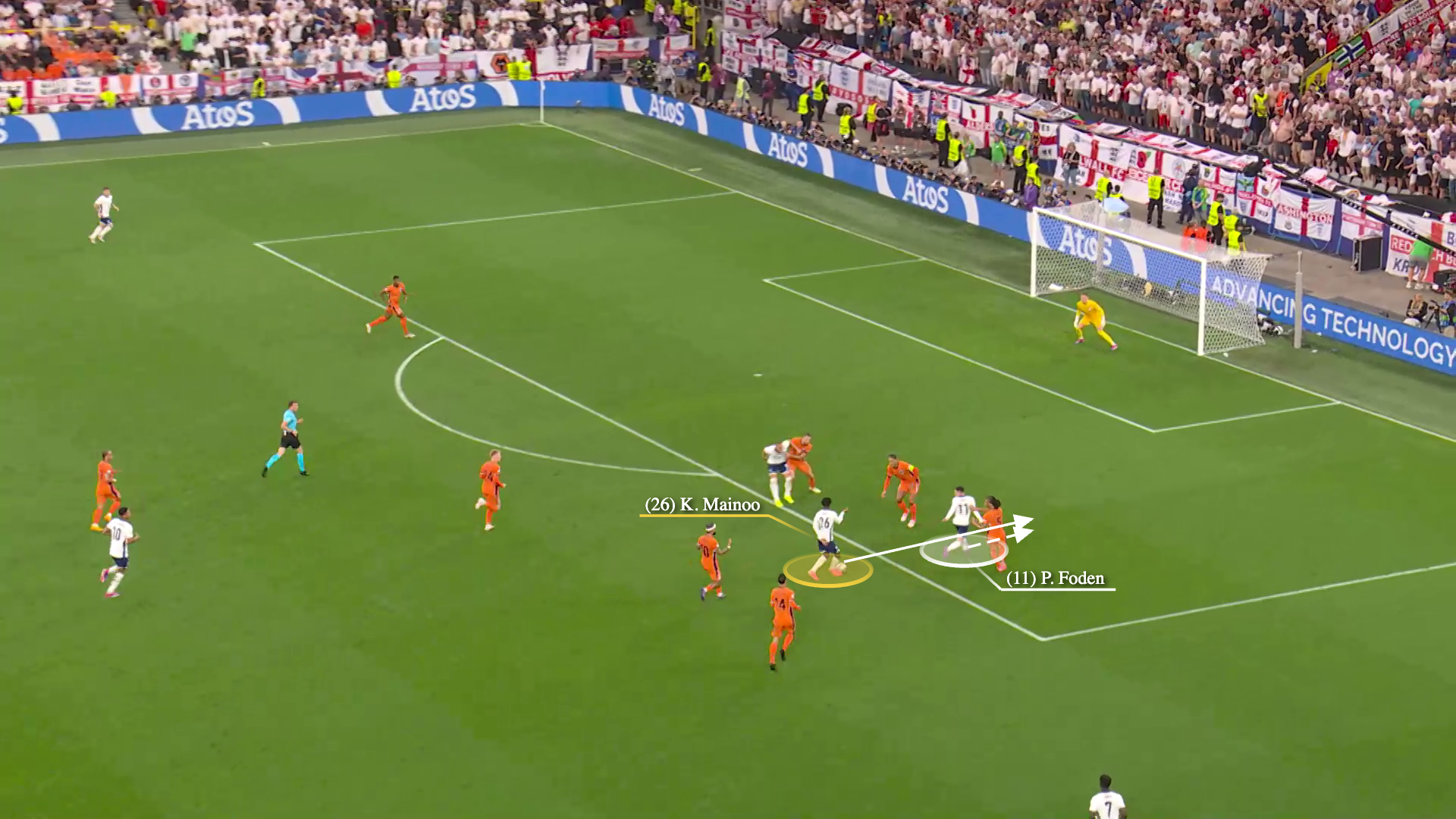
…but Denzel Dumfries prevented the latter from equalising by making a final save on the goal line.
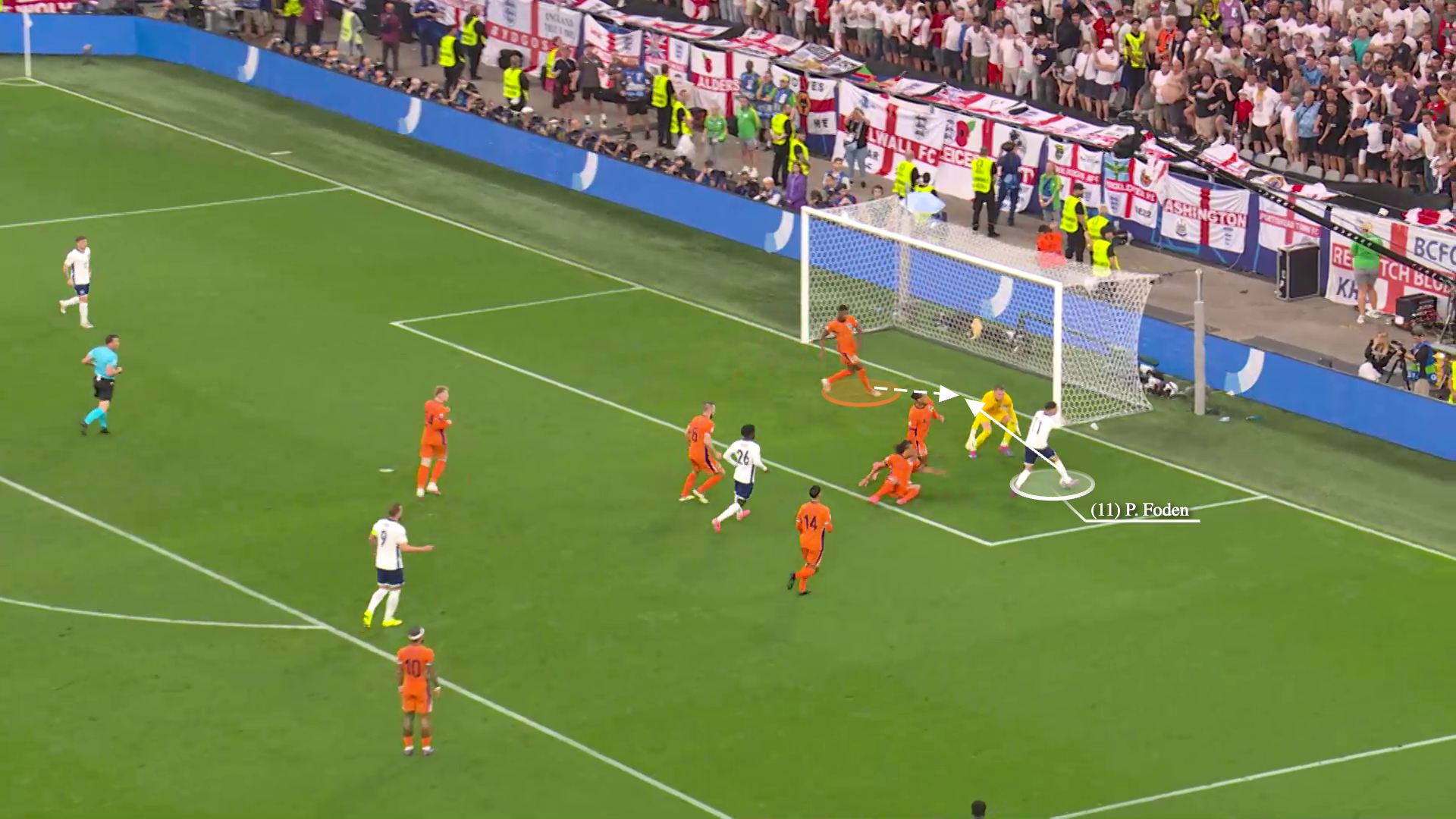
England’s first-half goal came from a controversial penalty, but the attack that led to that goal was based entirely on overloading the midfield.
In the build-up, Simons and Schouten focus on Mainoo and Rice, leaving Dumfries to mark Bellingham with Reijnders close to Foden. However, the Dutch right-back cannot commit to Bellingham due to Kieran Trippier’s advanced position on the English left flank.
When Mainoo passes the ball to Marc Guehi…
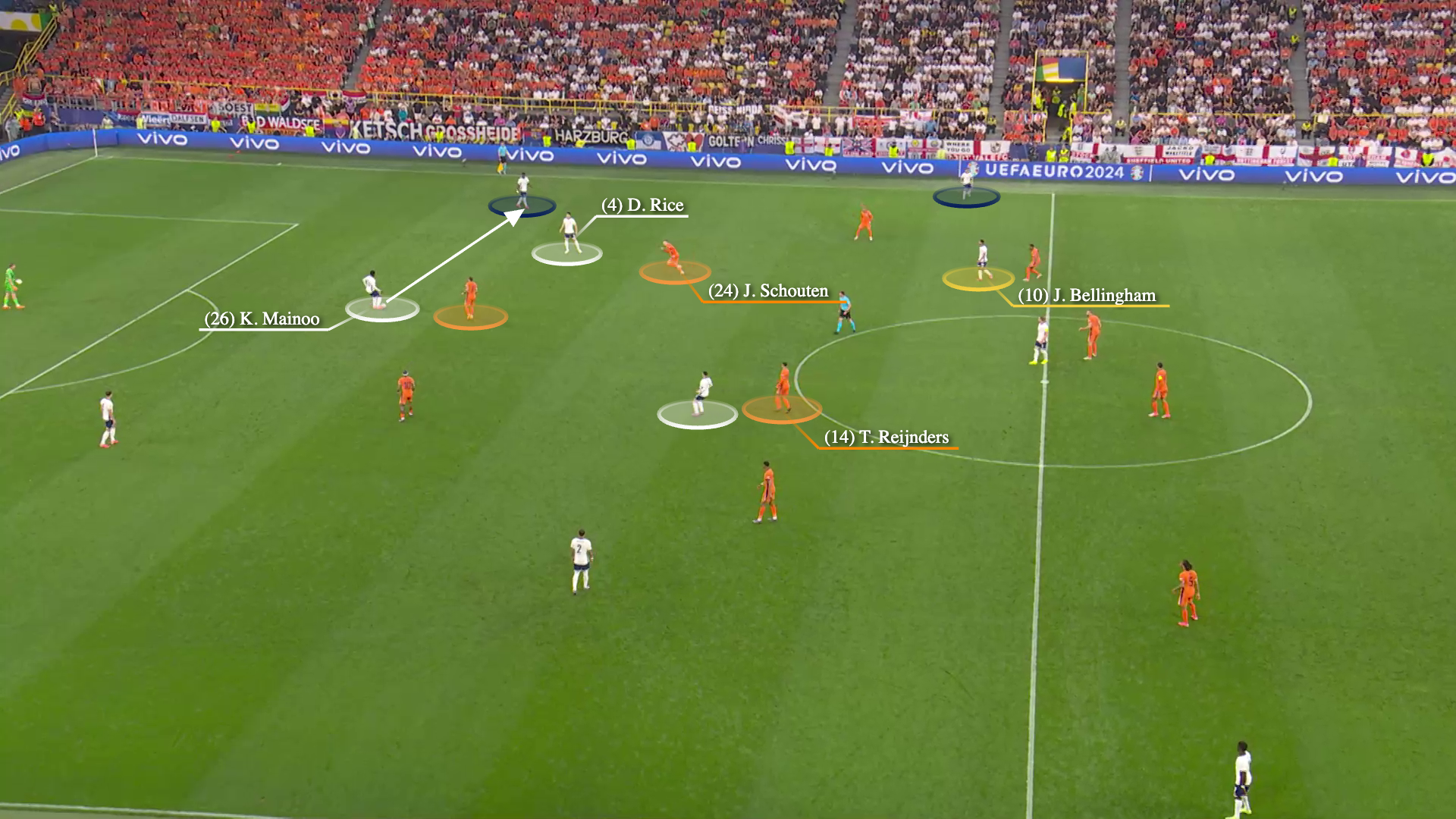
… Dumfries leaves Bellingham and drops back to defend against Trippier. The four-on-three overload in midfield allows Guehi to find Bellingham in space, and he advances the attack, which eventually leads to a penalty being awarded.
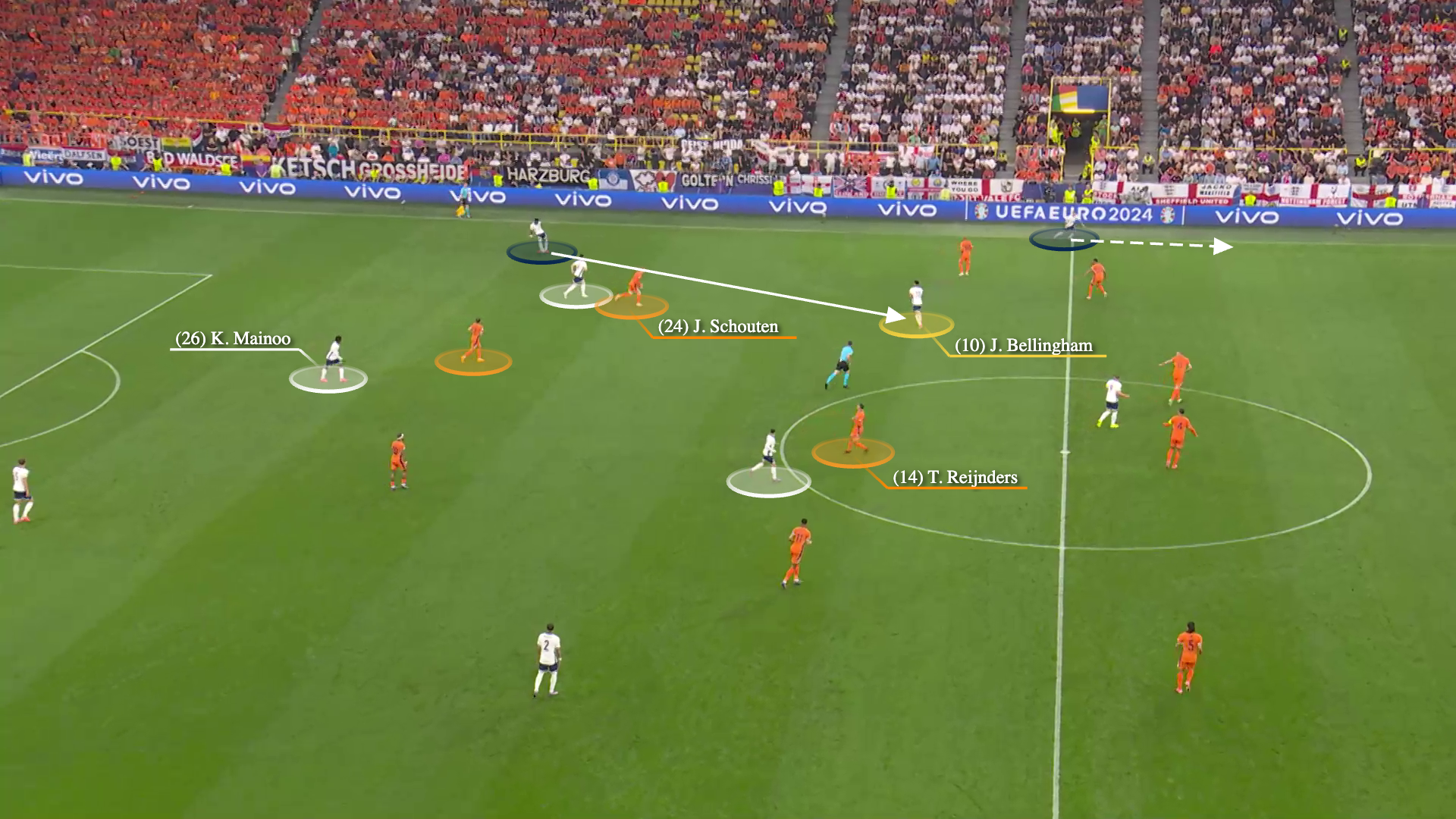
“The game started well for us, but after that we had some difficulties in midfield to stop the good players, like Bellingham and Foden, between the lines,” Koeman said after the match. “We didn’t control the game. We made some changes to regain control of the game.”
One of the changes Koeman was referring to was the adjustment to his team’s shape out of possession after Joey Veerman replaced Depay with 10 minutes left in the first half and Simons moved to the right wing.
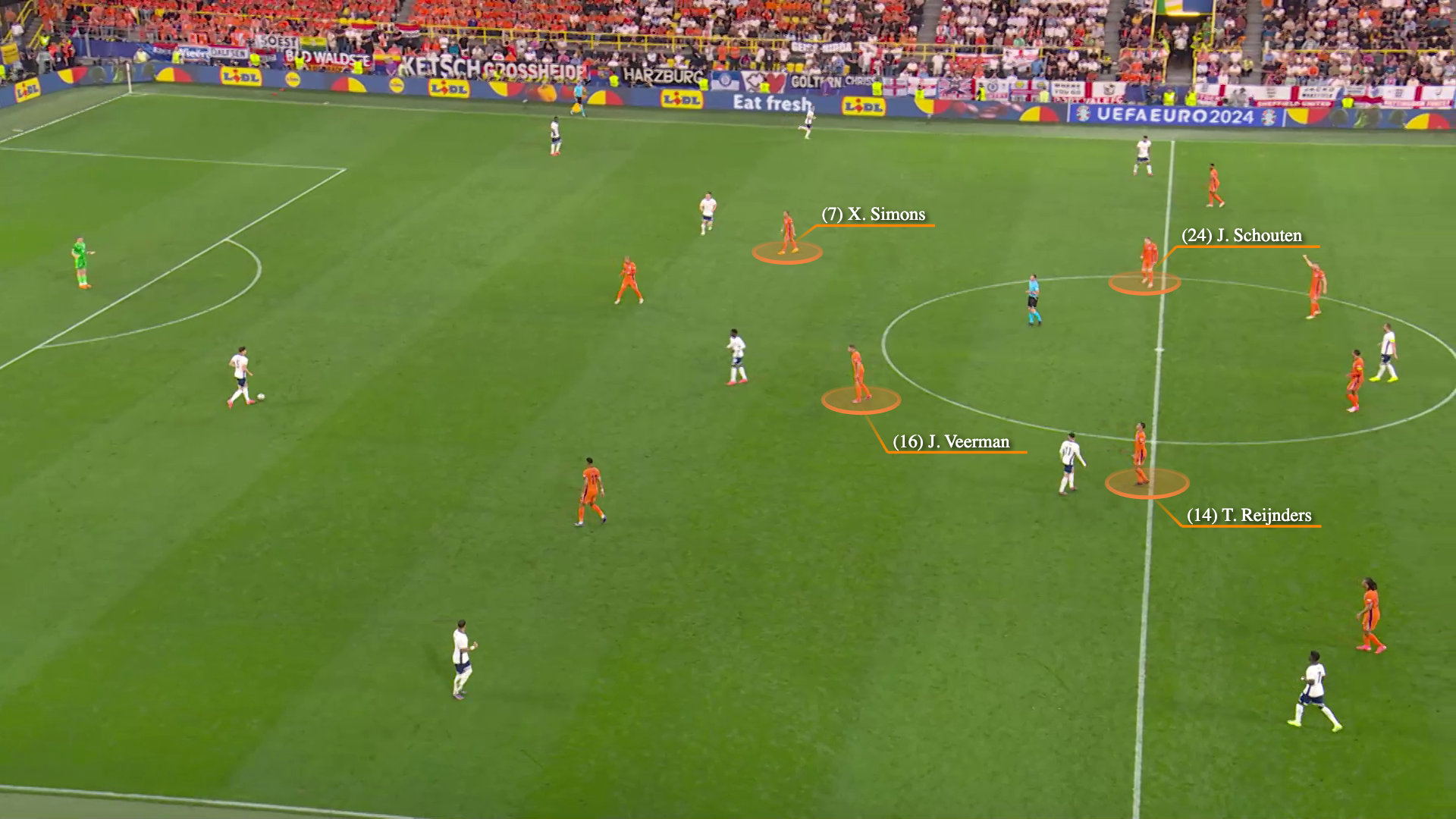
To neutralise England’s overload in midfield, Veerman marked Mainoo with Simons moving inside from his wing to keep an eye on Rice.
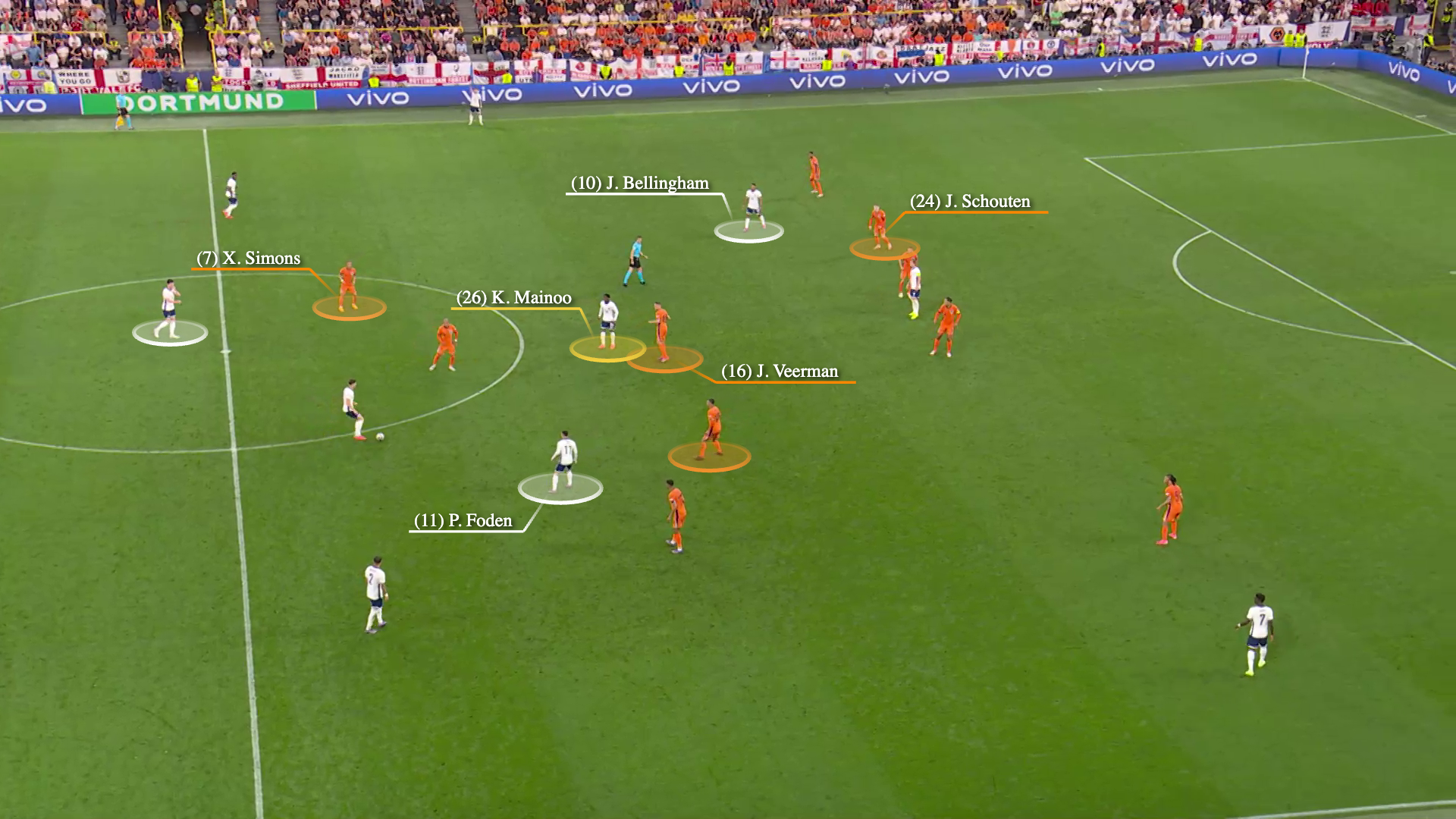
Koeman’s change neutralised England’s threat on the ball as they could not use Mainoo or Kane to attack the space vacated in midfield.
Veerman marked Mainoo from close range and Stefan de Vrij was more than happy to push and press Kane because Schouten and Reijnders were following all the runs from Bellingham and Foden.
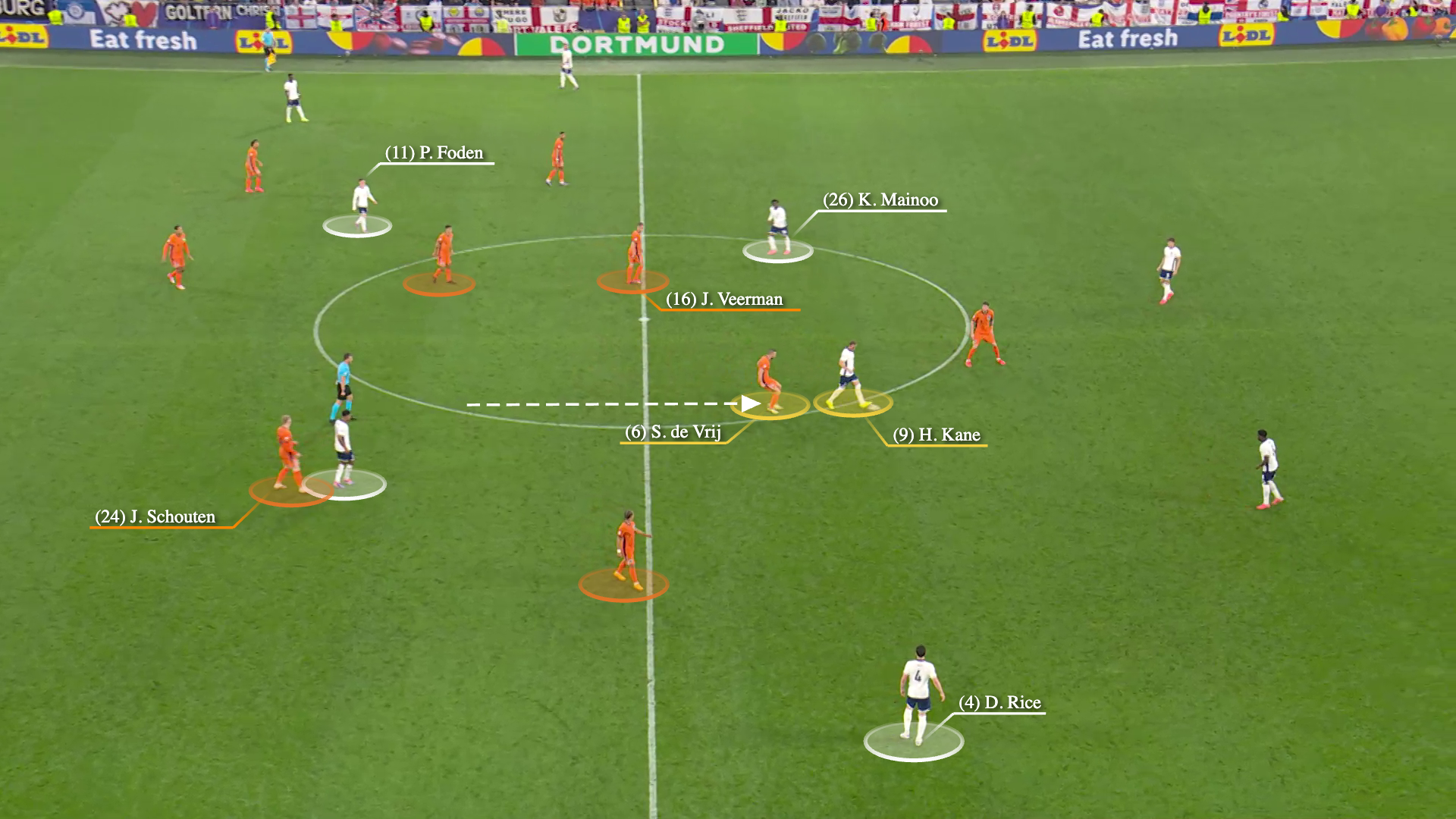
Southgate’s side were no longer able to play against the Netherlands as they had for much of the first half and a change of approach was needed.
Watkins’ introduction offered a different profile to Kane, with the Villa forward providing England with a passing option behind the defence.
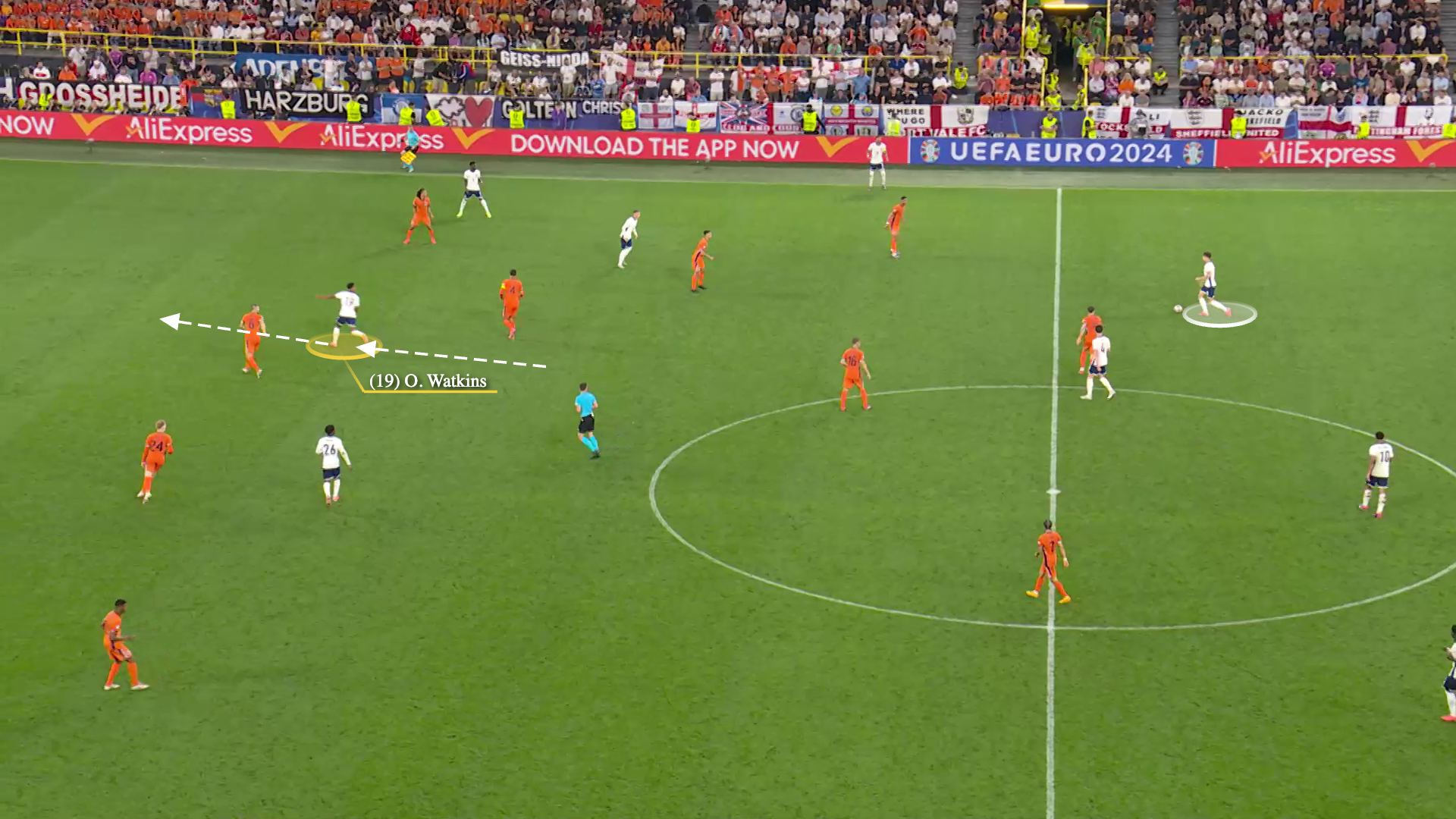
In this example, Watkins signals to Stones that he wants the ball played over…
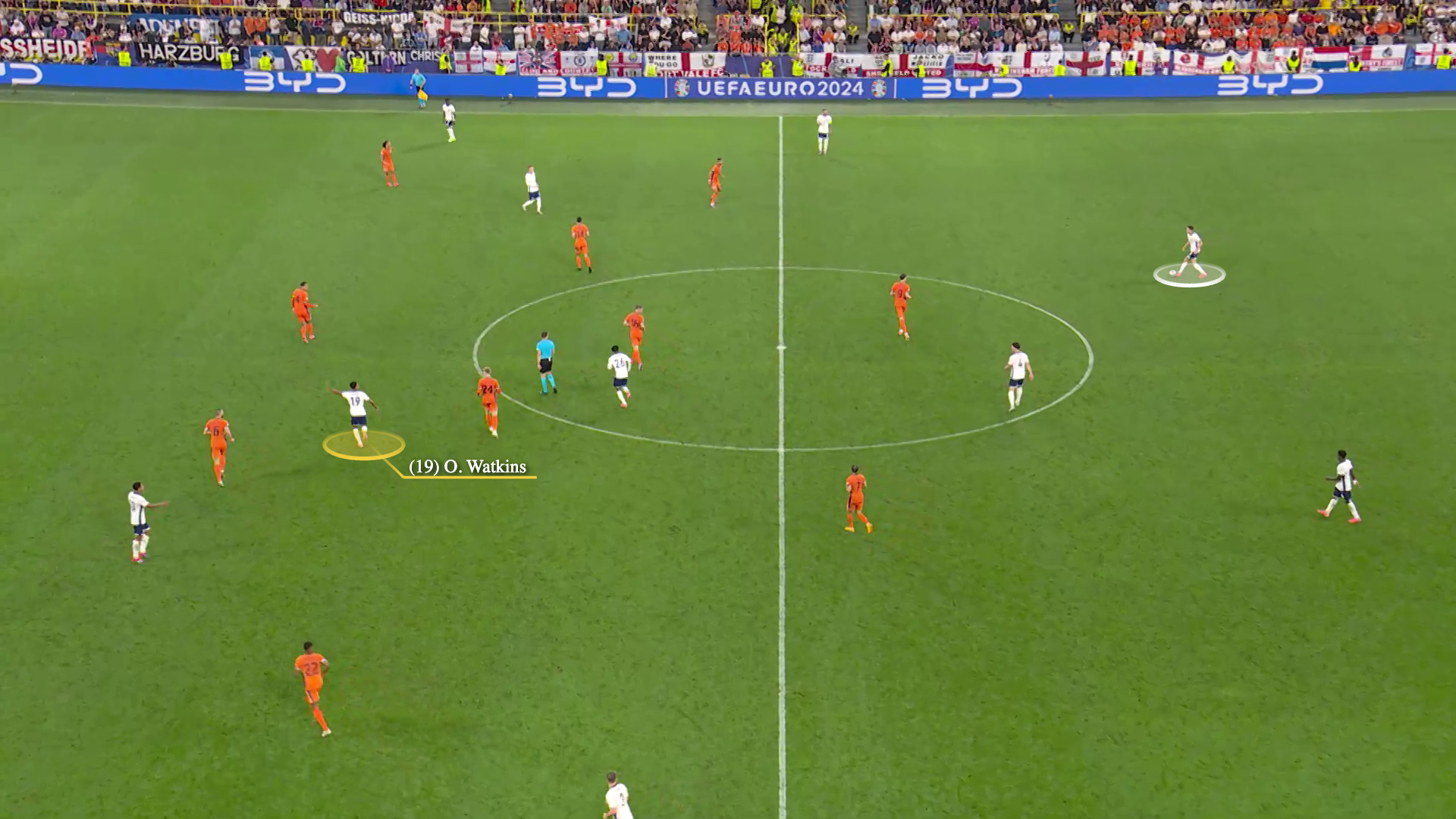
…and then he starts running, but the pass falls behind him.
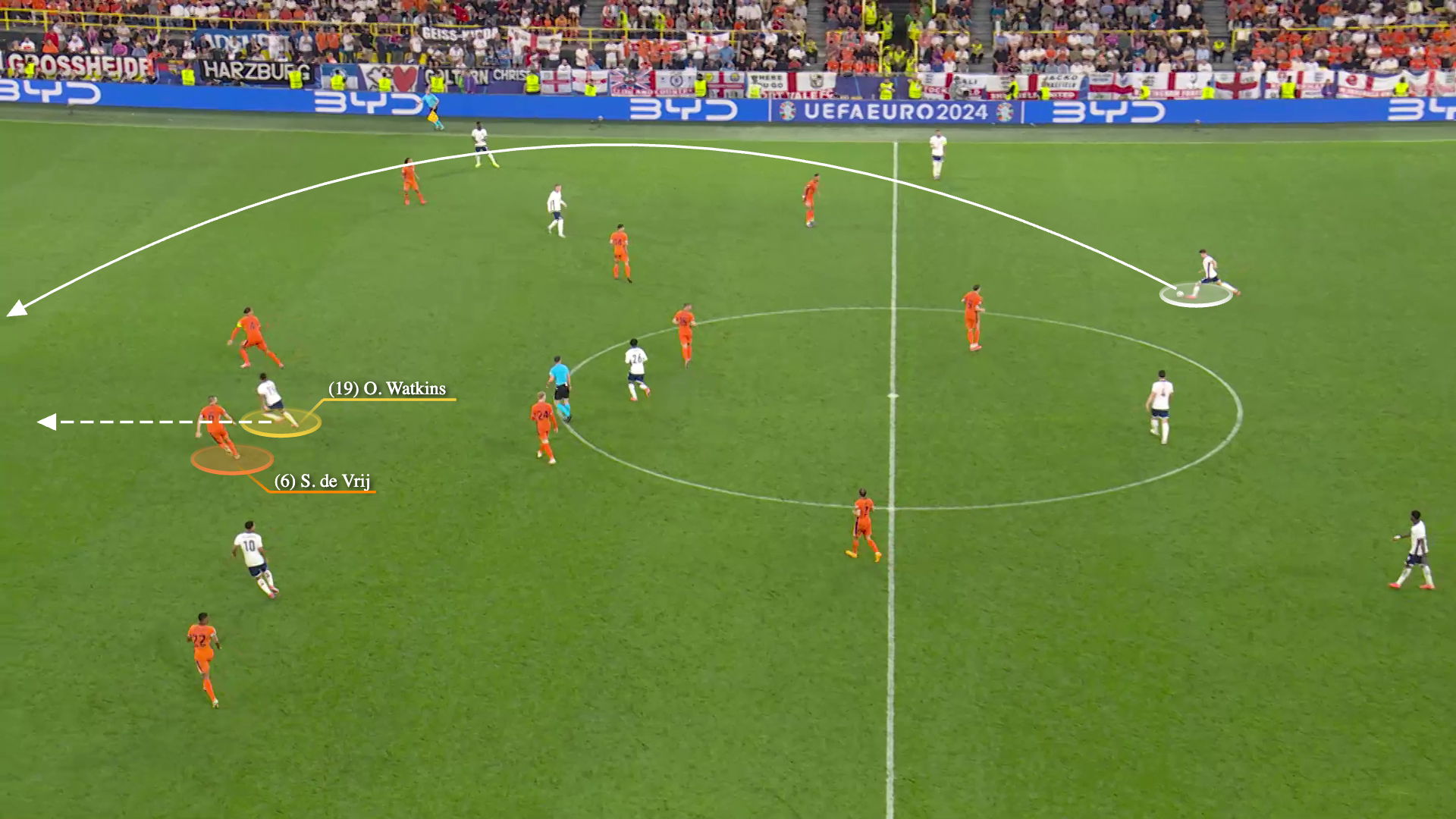
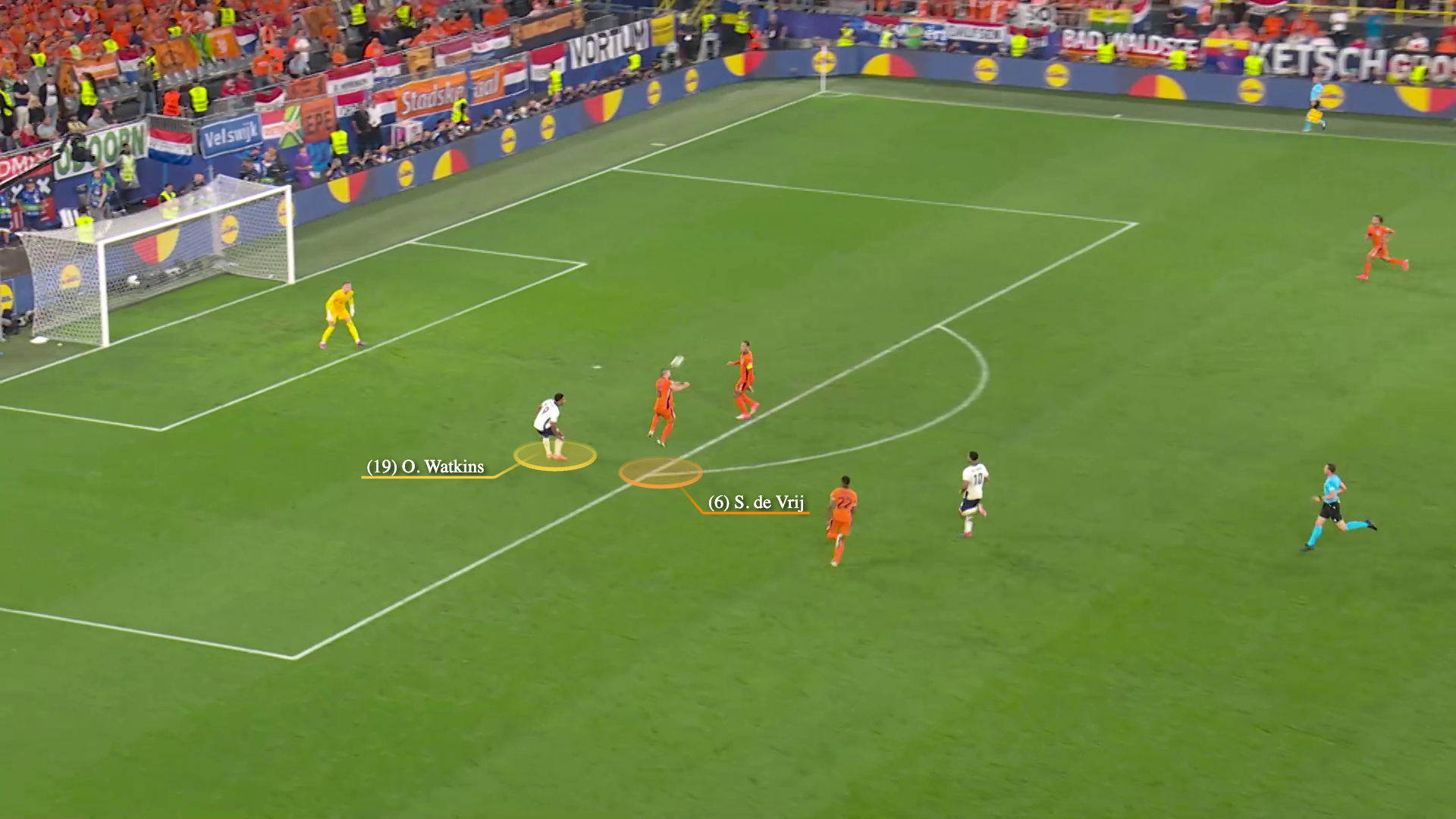
But Watkins continued to attack the space behind the Dutch defence, even when his team-mates couldn’t find him.
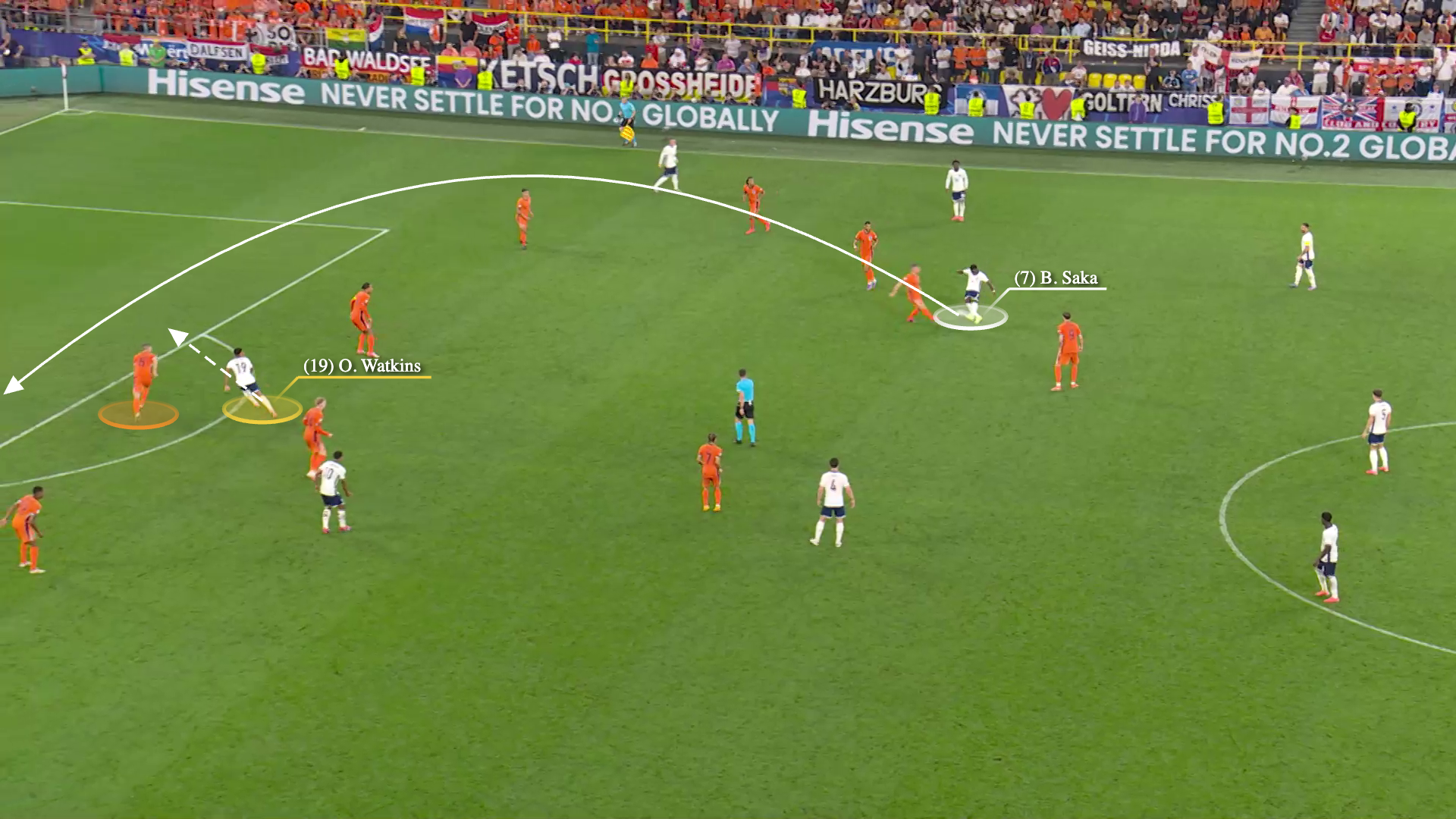
Eventually he was rewarded just before added time when substitute teammate Cole Palmer found his place…
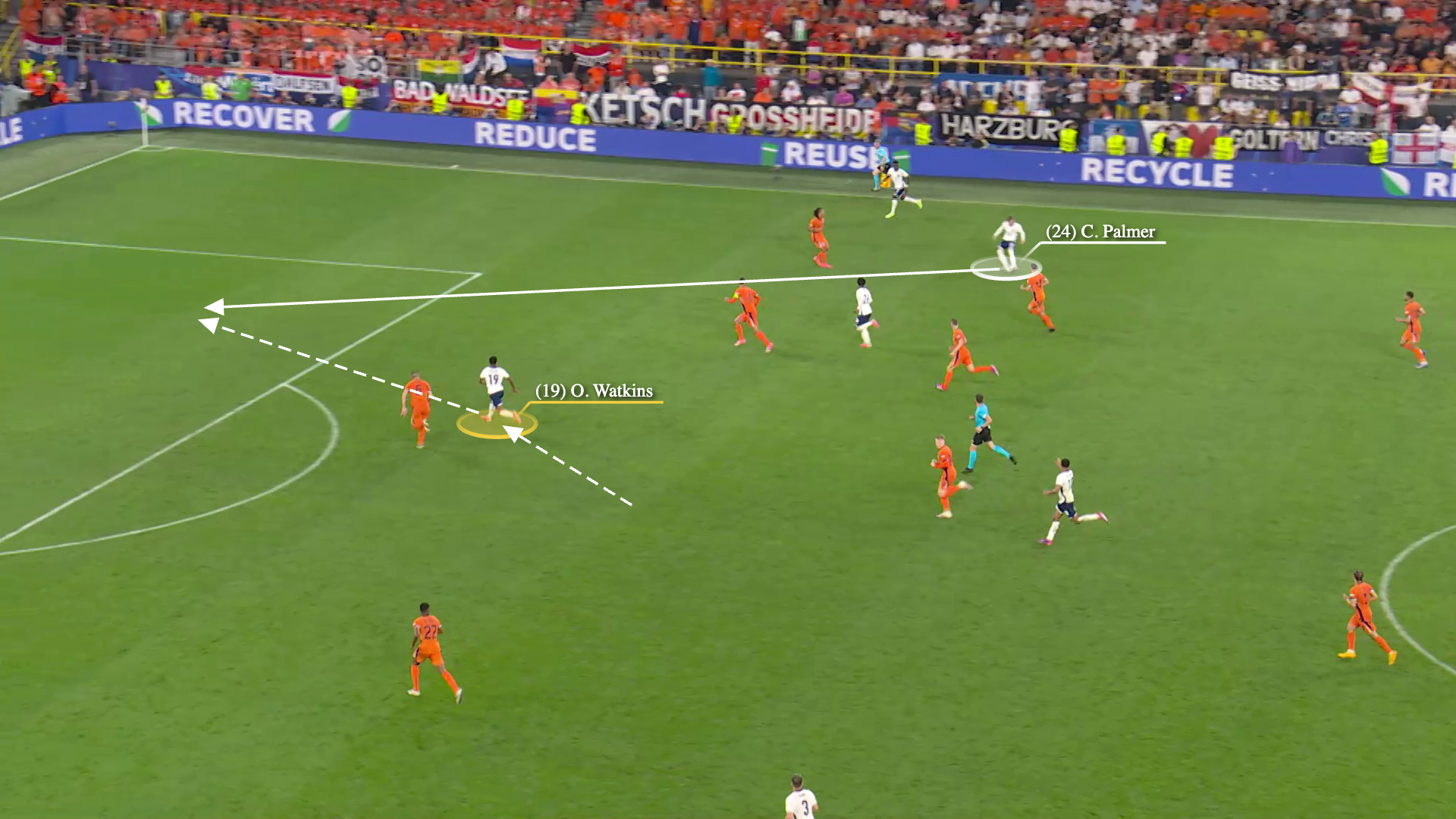
…and Watkins sent the ball into the far corner, sending England into Sunday’s final.
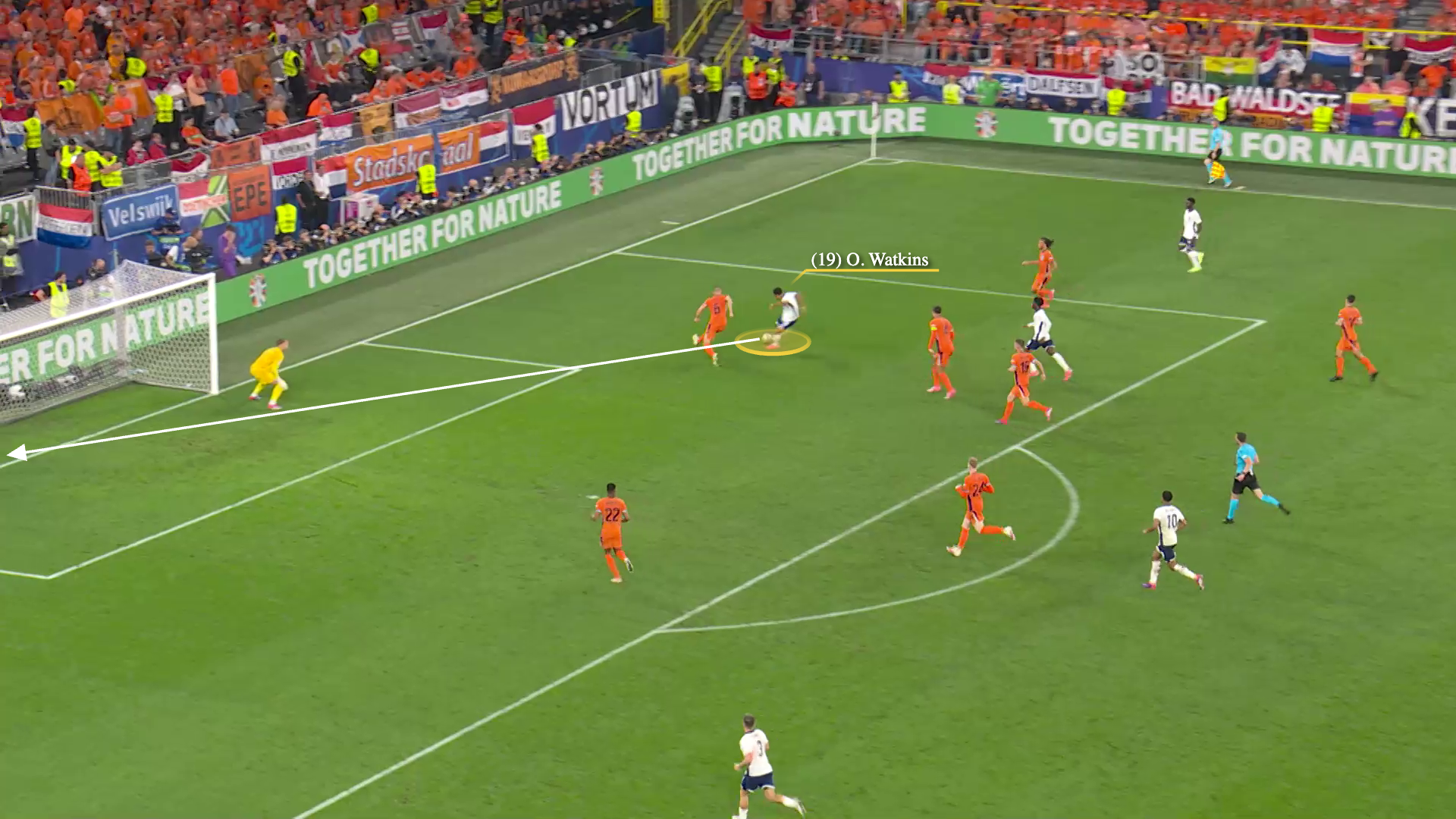
“We have good players on the bench and we wanted to take that gamble in normal time rather than wait until extra time,” Southgate said.
“We felt we were starting to lose a bit of pressure in terms of energy – Harry got that knock in the first half as well. Ollie can press well and he can make those runs in behind him like he did.”
In the second half, England failed to combine and play through the Dutch midfield, so Watkins’ runs in behind offered an alternative method of attack against tired legs.
Had Watkins not scored that goal, the substitution would have been logical given the Netherlands’ approach without the ball. Fortunately for England, he did.
A beautiful end to the match that England hopes to relive in Berlin against Spain.

GO FURTHER
How Ollie Watkins’ work off the ball took his game to a new level